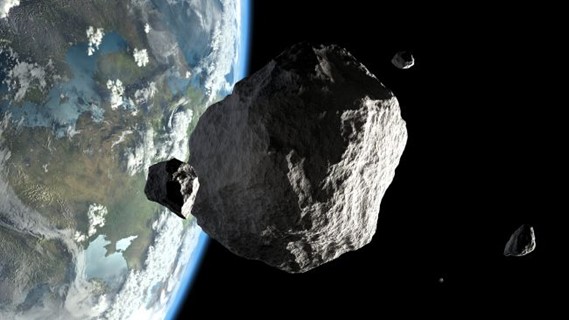Is this the start of something?
Is Earth at Risk?
Almost every week there is news of a new, undiscovered asteroid flying past Earth.
How long until one comes too close?
If a meteor struck Earth, how would it be portrayed in the media?
Would the government invoke the Bliss Protocol like in the book ASTEROIDS to keep the public calm and ignorant?

Three asteroids are expected to hurtle past Earth today (Sept. 9). One will pass as near as 310,000 miles (500,000 kilometers) — closer than any potential asteroid near-miss for the next three months.
Asteroid 2019 QZ3 flew by at 6:49 a.m. ET; asteroid 2019 RG2 follows at around 3:13 p.m. ET, and the third, asteroid 2019 QY4, flashes past at 9:10 p.m. ET, the International Business Times reported.
QZ3 is the biggest of the trio, with a diameter of 220 feet (67 meters), while RG2 and QY4, respectively measure approximately 66 feet (20 m) and 52 feet (16 m) in length, according to NASA’s Center for Near-Earth Object Studies (CNEOS).
Space rocks such as these, known as near-Earth objects (NEOS), are nudged by the gravity of neighboring planets into orbital paths that carry them fairly close to our cosmic address. But “close” in space is a relative term: At the closest point in their passage, all three of today’s asteroid visitors will be farther from Earth than the moon is, according to CNEOS.
RG2 is the fastest asteroid, speeding by at a velocity of nearly 50,000 miles per hour (80,000 kilometers/hour), while QY4 is moving at just over 17,000 mph (27,000 km/h). QZ3 is the slowpoke of the group, at 16,700 mph (26,800 km/h), according to IBT. Though QZ3 is the biggest asteroid, it is also the furthest from Earth, at a distance of approximately 2.3 million miles from our planet, CNEOS reported.
Another asteroid — 2006 QV89 — was previously thought to potentially follow a trajectory that could slam into Earth, with a 1-in-7,299 chance of an impact on Sept. 9. But experts announced in July that the asteroid did not appear in the area of the sky where it would have shown up if it were on a collision course with our planet, representatives with the European Southern Observatory (ESO) said in a statement.
CNEOS representatives confirmed on Aug. 15 that QV89 was no threat to Earth, and that the asteroid would instead rocket past our planet on Sept. 27 “at a comfortable distance of 4.3 million miles (6.9 million km), about 18 times the distance of the Moon.”
Currently, there are 878 NEOs that demonstrate some risk — however small it might be — of colliding with Earth, according to a list maintained by the European Space Agency (ESA). Of these, the biggest (and second on the list) is asteroid 1979 XB. Measuring about 2,300 feet (700 m) in length and traveling at more than 58,000 mph (93,300 km/h), the massive space rock is expected to come calling on Dec. 14, 2113, ESA reported.
https://www.livescience.com/three-asteroid-flyby.html
